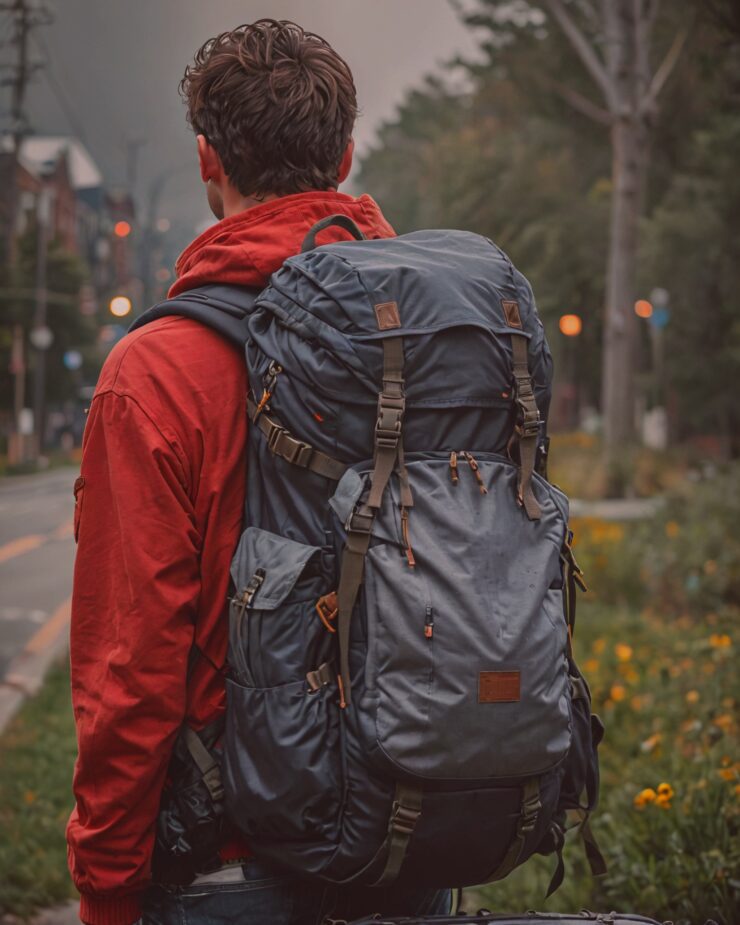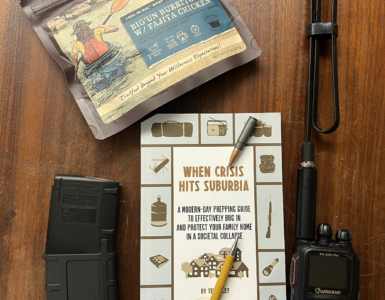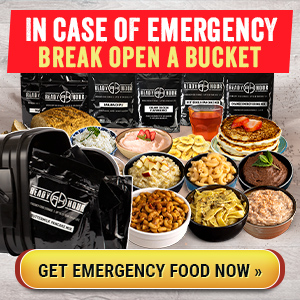A bug out bag is a crucial part of emergency preparedness, ensuring you have essential survival supplies ready to go in case of a crisis. The goal is to balance preparedness with portability, so choose a sturdy, comfortable backpack that allows for easy access to items while keeping the overall weight manageable.
Key Components of a Bug Out Bag
Water
Water is the most vital survival resource. Pack at least three days’ worth of water and purification tools to ensure a steady supply. If you want to save on weight – pack half the water and pack a water filter. The water filter gives you a system to use to “create” your own potable water and weighs less than carrying the actual water.
- Multiple water bottles – make sure your water bottle is compatible with your water filter.
- Water purification tablets or a portable water filter (e.g., LifeStraw, Sawyer Mini, MSR Miniworks)
Food
Non-perishable, high-energy food is essential for sustaining energy levels during an emergency.
- Energy bars, dried fruit, nuts, or MREs (Meals Ready to Eat). My personal favorite are Mountain House – they taste better than the budget options – I have discovered from many hikinging trips that the last thing you want is to be tired and miserable AND then have to eat a bad meal. A good meal definitely improves morale.
- Small can opener (if packing canned goods)
Shelter
Protection from the elements is critical, especially in extreme weather conditions.
- Emergency Mylar blanket (lightweight and retains body heat)
- Tarp or bivy sack for quick shelter setup
- Small, packable tent (if space allows)
First Aid
A well-stocked first aid kit can be lifesaving in an emergency.
- Bandages, gauze, antiseptic wipes, and pain relievers
- Prescription medications with refills (at least a week’s supply)
- Personal medical needs such as EpiPens or inhalers
Navigation
If technology fails, traditional navigation tools are invaluable.
- Map of the area and a waterproof pouch
- Compass for orientation
Communication
Staying informed and able to signal for help is crucial.
Tier 1 Communications
- Battery-powered or hand-crank radio for emergency updates
- Hand-crank charger for electronic devices
- Extra batteries for devices
- Whistle for signaling/mirror for signaling
Tier 2 Communications
When it comes to communications for your bug-out bag, GMRS (General Mobile Radio Service) and HAM radios are invaluable for staying in touch when traditional networks fail. Popular options include the Wouxun KG-935G Plus, known for its reliability and range, and the Baofeng radios, which offer excellent value for the price. Midland also offers a variety of rugged, portable radios that can be a great addition to your kit. These radios allow you to maintain contact with others in your group and monitor emergency channels. For a deeper dive into choosing the best radio solutions for your bug-out bag, check out our other articles on GMRS and HAM radios to ensure you’re fully prepared for any situation.
- Top 3 Baofeng Radio Books Every Prepper Should Read
- Top 4 GMRS Radio Books Every Prepper Should Read
Clothing
Pack versatile, weather-appropriate clothing to stay warm and dry.
- Base layer (moisture-wicking shirts and thermal underwear)
- Insulating layer (fleece or down jacket)
- Waterproof outer layer (rain jacket and pants)
- Sturdy shoes or boots
- Hat and gloves for cold weather
Light
Having a reliable light source can make all the difference in low-visibility conditions.
- Flashlight with extra batteries
- Headlamp for hands-free illumination
Tools
A few essential tools can serve multiple survival purposes.
- Multi-tool with pliers, screwdrivers, and other functions
- Pocket knife for cutting and basic survival tasks
- Fire starter (magnesium or flint) for warmth and cooking
- Paracord for shelter construction, repairs, and other uses
Important Considerations
Personal Needs
- Include necessary personal items such as glasses, hearing aids, or hygiene products.
- Pack a small notebook with emergency contacts and important documents in a waterproof bag.
Local Environment
- Tailor your bug out bag to your specific region and potential hazards (e.g., earthquake kit, flood protection gear, cold-weather items).
Weight and Size
- Prioritize lightweight and compact items to ensure the bag is easy to carry for extended periods.
Regular Maintenance
- Periodically check and update your supplies.
- Rotate food and water to prevent expiration.
- Test electronics and replace batteries as needed.
By carefully selecting and maintaining your bug out bag, you ensure that you’re ready for unexpected emergencies. Being prepared gives you peace of mind and a greater chance of staying safe in any situation.

















